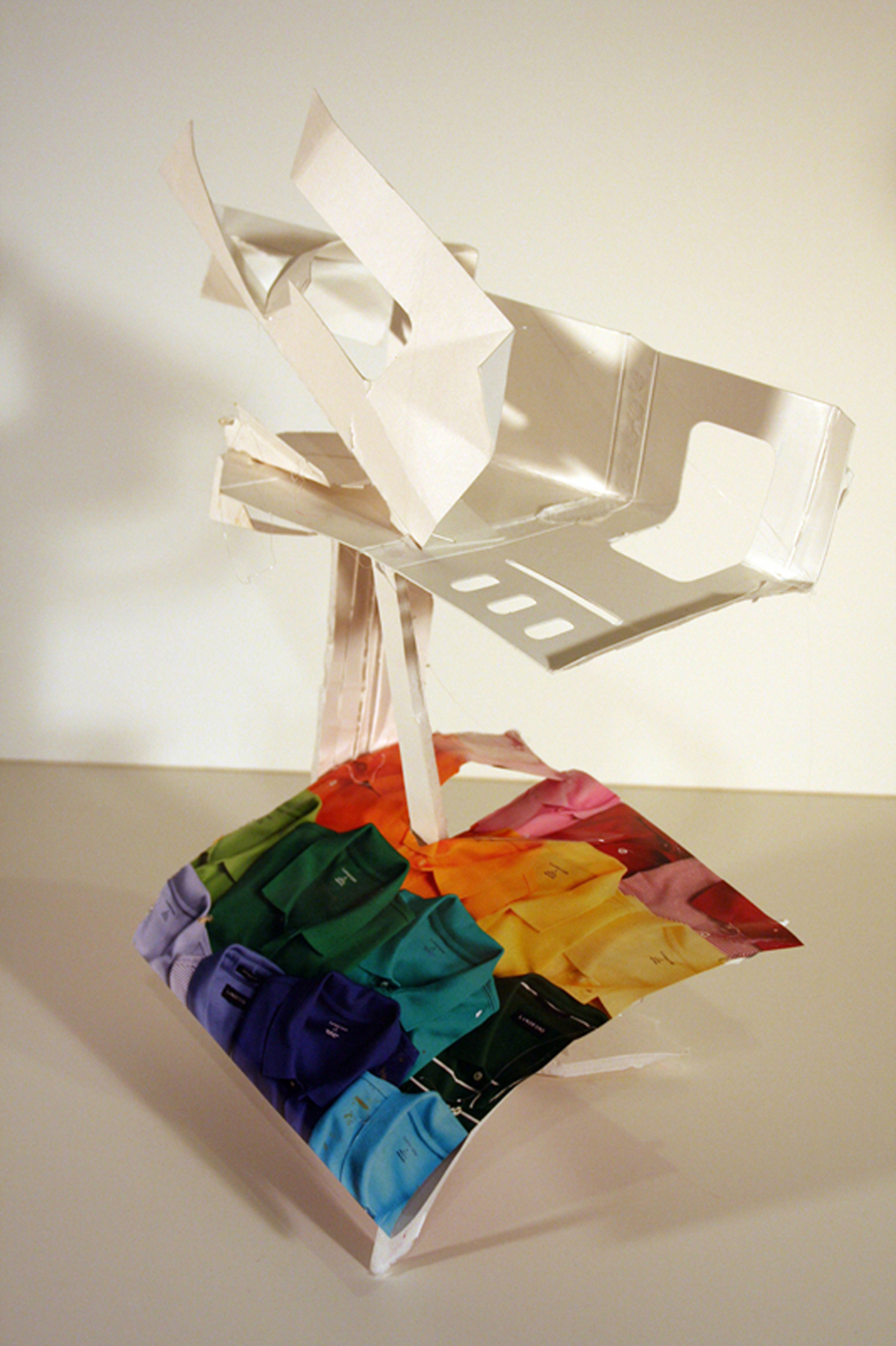
- By
- Johanna Silver
THE PAPER ART OF SUZANNE GOLDENBERG
Overproduction, refuse, and waste inform Suzanne Goldenberg’s creations. Through found materials—ranging from bottle caps to twine and textiles—her work visually reflects her consumption-conscious notions, while maintaining purposeful lines and shapes. Being at the mercy of the materials that are available to her isn’t a hindrance. To the contrary, it offers her an endless supply of artistic elements and serves as a guide that shapes her creative voice. “I had this moment once where I was like, ‘Cardboard is to art marking as socks are to laundry.’ You can never run out, it’s always there,” Goldenberg jokes.
Shifts in Goldenberg’s environment and context have lead to new components in her art. While in residency at the Edward F. Albee Foundation in Montauk, she collected sea trash like driftwood, netting, and buoys, turning them into original creations. In Nebraska City, which she describes as “freezing with no garbage,” she worked with wire, wood, broken glass, and cigarette butts, a process which has led her to take on a more minimal approach in her work. “I’ve collected this stuff through necessity and I’ve had to try and pare down my materials through necessity, which is another restraint that ultimately produces new possibilities,” she explains.
Though her recent work has taken a more sculptural turn with industrial webbing, roving, and large pieces of wood, her first introduction to art making was through figure drawing. This start formed her unconscious tendency toward working with lines, initially through pen and paper, then thread and fabric, and finally through the more industrial materials that she currently employs. Her background in drawing has also led Goldenberg to a spot at Gallery Molly Krom’s booth in the second edition of the Art on Paper fair, which opens today on Manhattan’s Lower East Side and showcases curated exhibitions of works from numerous galleries which utilize and innovate with paper as an artistic medium.
Goldenberg’s creations celebrate the form as a portal to her work’s many incarnations. “All of these pieces in the installation are paper-based assemblages or collages that are now more structural or three-dimensional,” she explains.
As for future works, she hints at the incorporation of ceramics and plaster into her ever-present motif: “In terms of themes, I really respond to what’s around me, so these issues of consumption and value and production and waste are unfortunately not going anywhere.”
Art on Paper runs through March 6 at Pier 36, New York.
- By
- Johanna Silver


















